12 Must-Have Vietnamese Lunar New Year Foods
The cuisine of Tet (Vietnamese New Year) is distinguished by its richness and diversity, with traditional dishes carrying symbols of prosperity, luck and good health. Tet is the perfect opportunity for families to get together and share moments of joy over carefully prepared food. At each Tet, Vietnamese families carefully prepare festive meal trays, both generous and refined, in homage to their ancestors.
.jpg)
Bánh chưng is an iconic culinary symbol of Tet, embodying abundance and gratitude to ancestors. Made with sticky rice, fatty pork, and mung beans, it is wrapped in dong leaves and boiled for 8 to 10 hours over a wood fire to achieve the perfect texture and flavor. The preparation of bánh chưng is a cherished family tradition, bringing loved ones together in a warm and joyful atmosphere, strengthening family bonds.
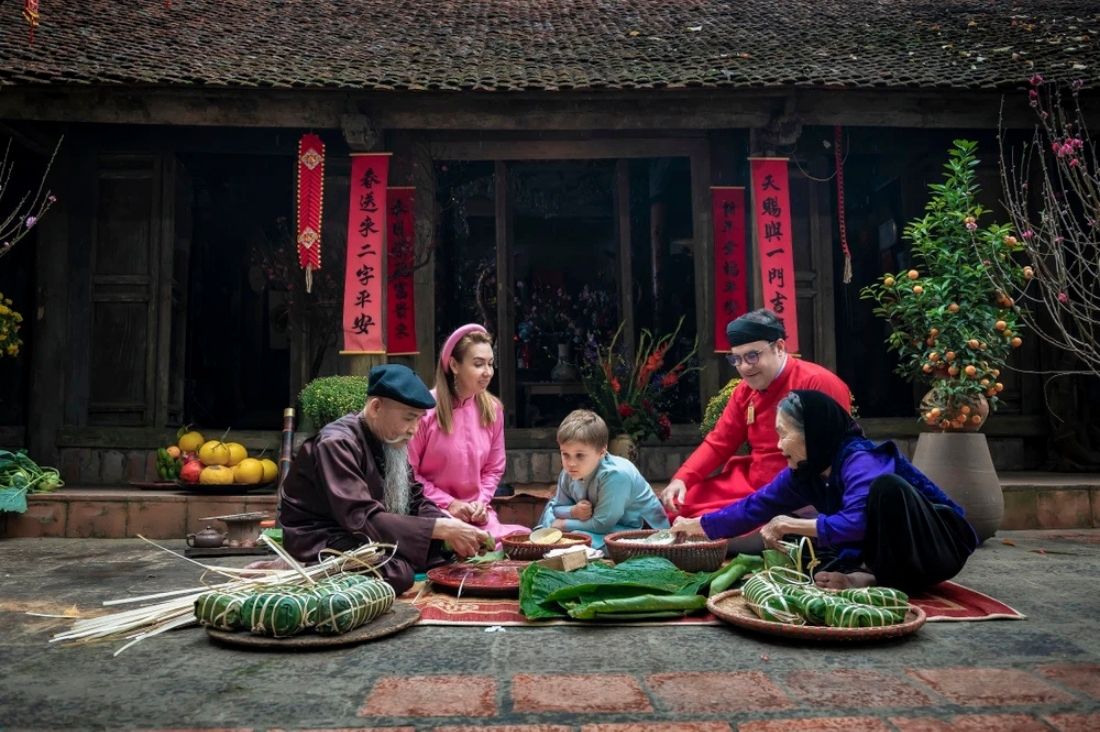

Bánh tét, a traditional delicacy of southern Vietnam, features the same ingredients as bánh chưng but stands out with its distinct cylindrical and elongated shape.
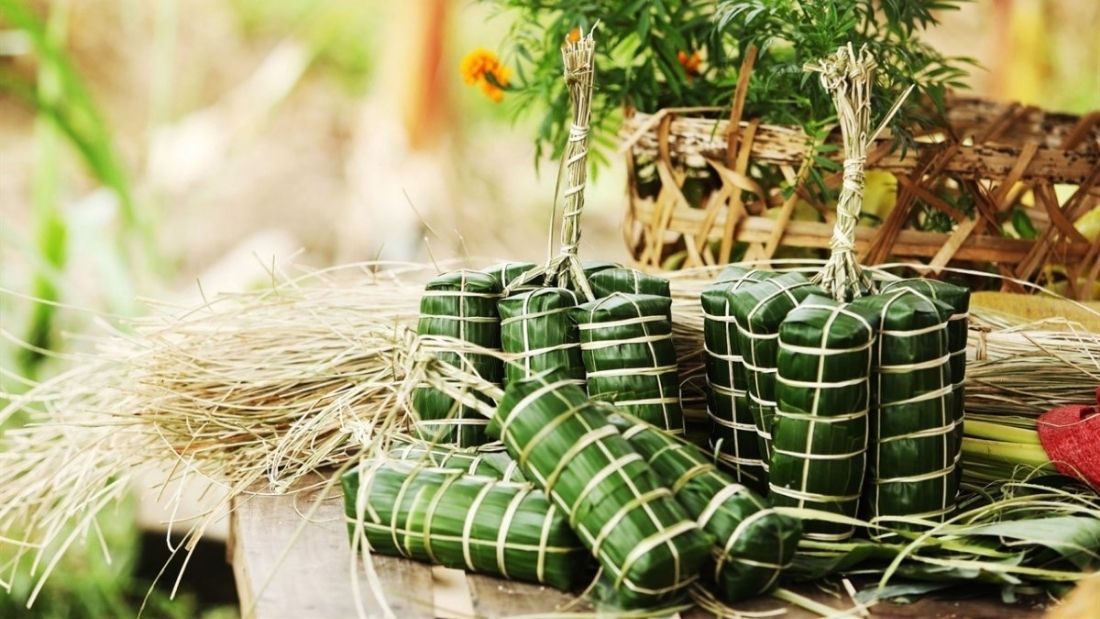
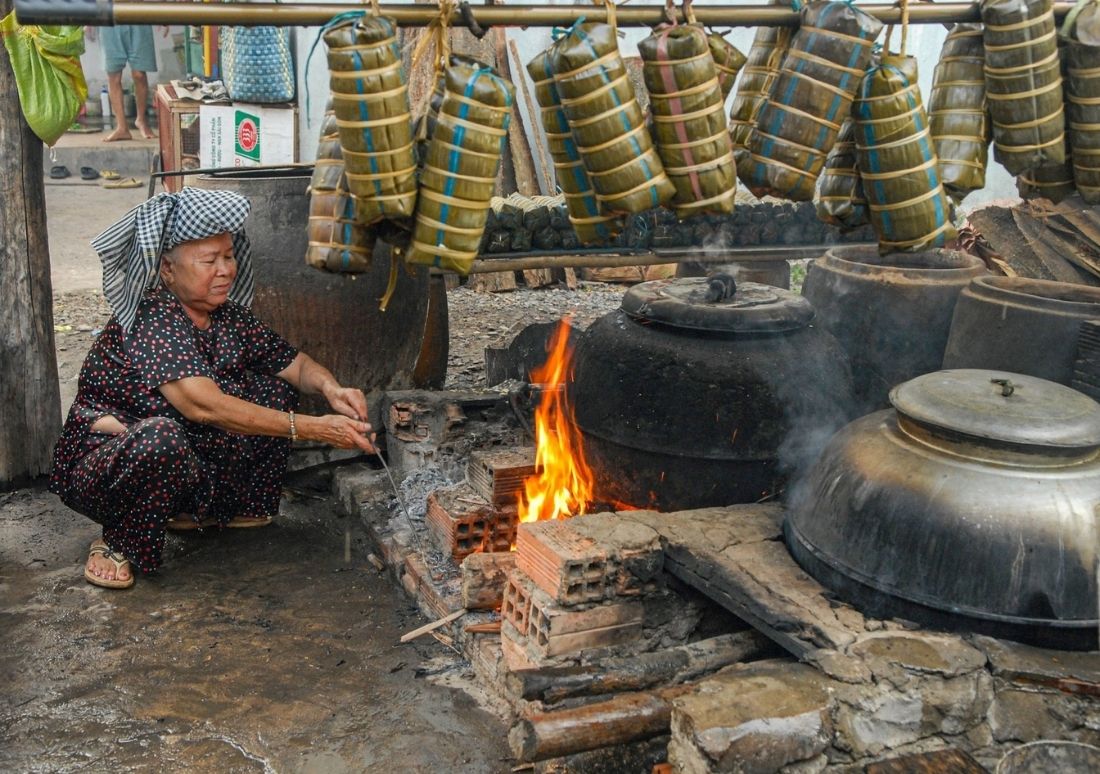
Canh măng (dried bamboo soup) offers a delightful harmony of textures and flavors. The dried bamboo, softened through soaking, is slow-cooked with pork belly, creating a rich and flavorful dish that perfectly balances the tenderness of the meat with the crunch of the bamboo.
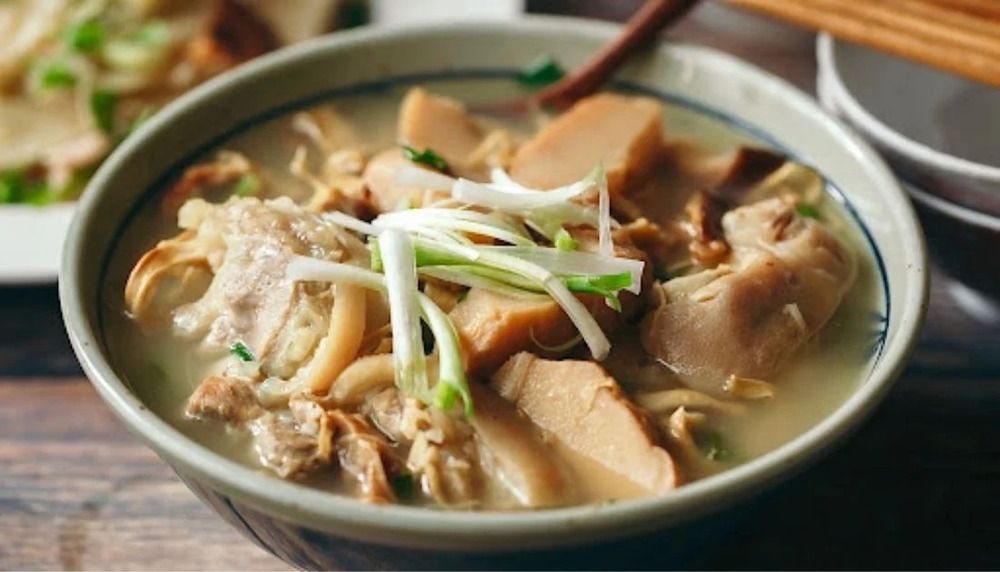
Thịt kho tàu (braised pork with eggs) is a comforting and symbolic Tet dish. Made with hearty chunks of pork belly, eggs, and coconut milk, it boasts a rich, slightly sweet flavor. Slow-cooked to perfection, the pork becomes tender and succulent, making it the perfect companion to steamed white rice.
.jpg)
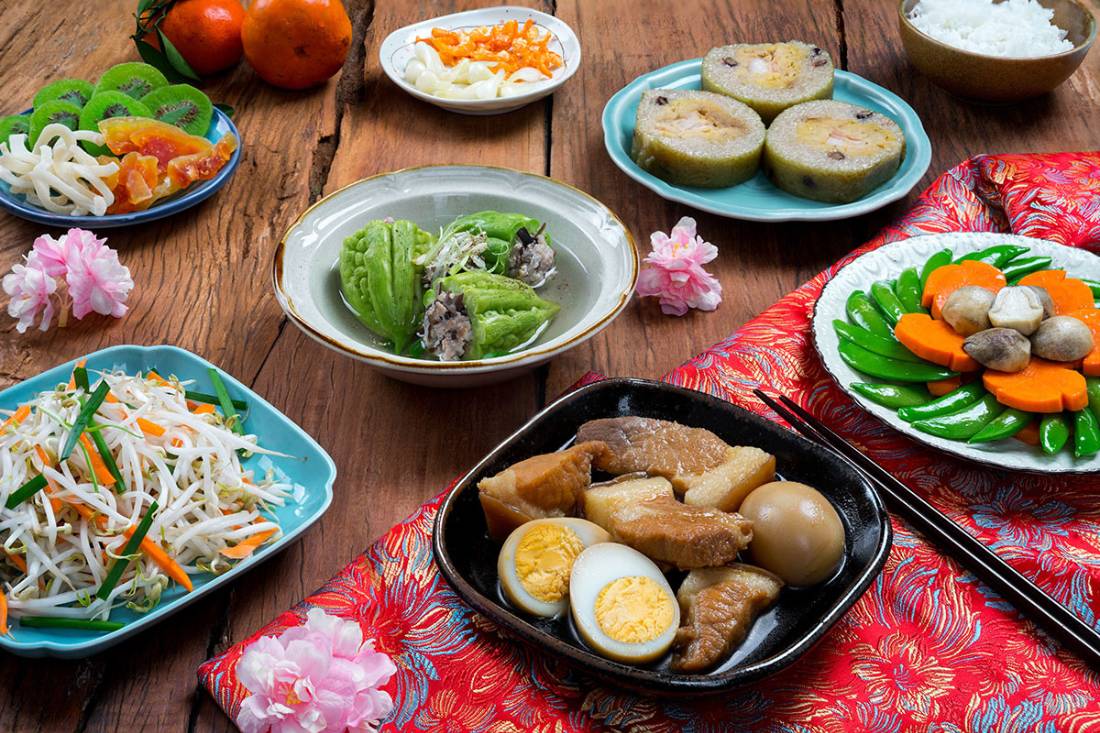
Củ kiệu tôm khô (pickled onions with dried shrimp) is a flavorful Tet specialty. The onions are trimmed to keep only the bulbs, then soaked in a sweet brine for 7-10 days. Topped with dried shrimp, this dish delivers a harmonious blend of spicy, salty, and sweet flavors.
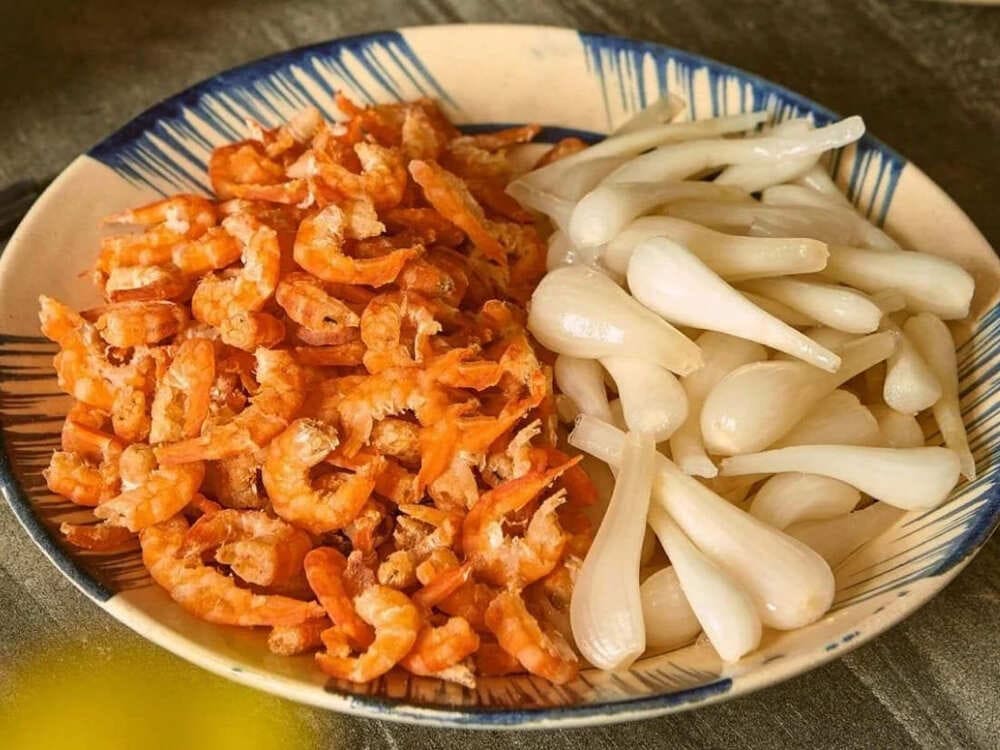
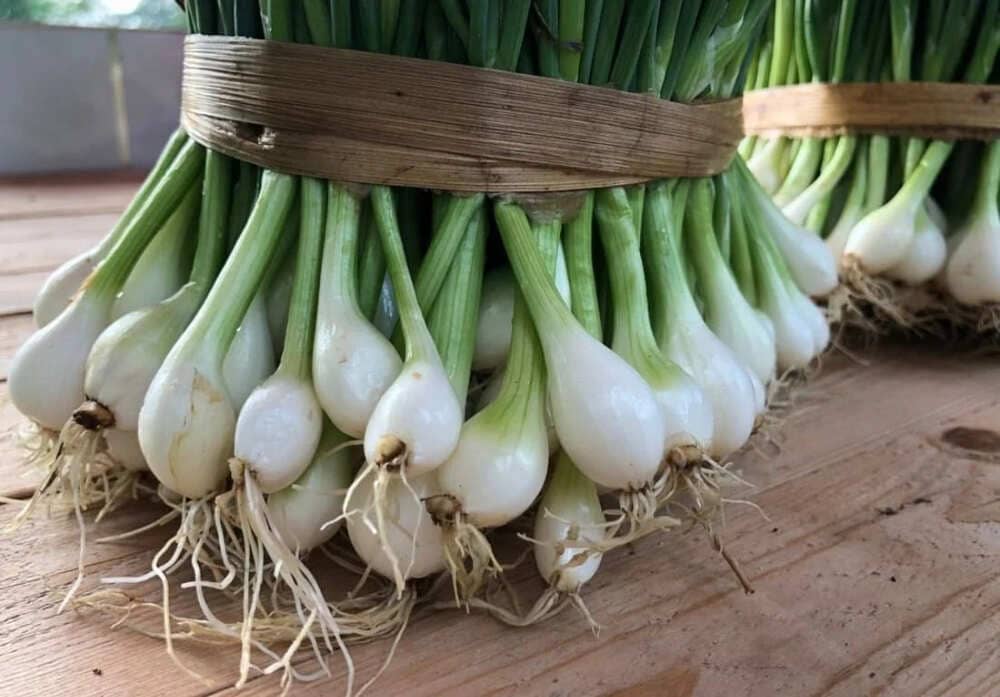
Canh khổ qua (stuffed bitter gourd soup) holds profound symbolic meaning, representing the hope that past hardships will fade away, paving the way for a prosperous new year. This dish is especially popular in southern Vietnam, where the bitter gourd is hollowed out, stuffed with seasoned ground meat, and slow-cooked to infuse the broth with its rich, comforting flavors.
.jpg)
In contrast, northern Vietnam traditionally enjoys canh bóng (pork skin soup) during Tet, highlighting regional culinary diversity.
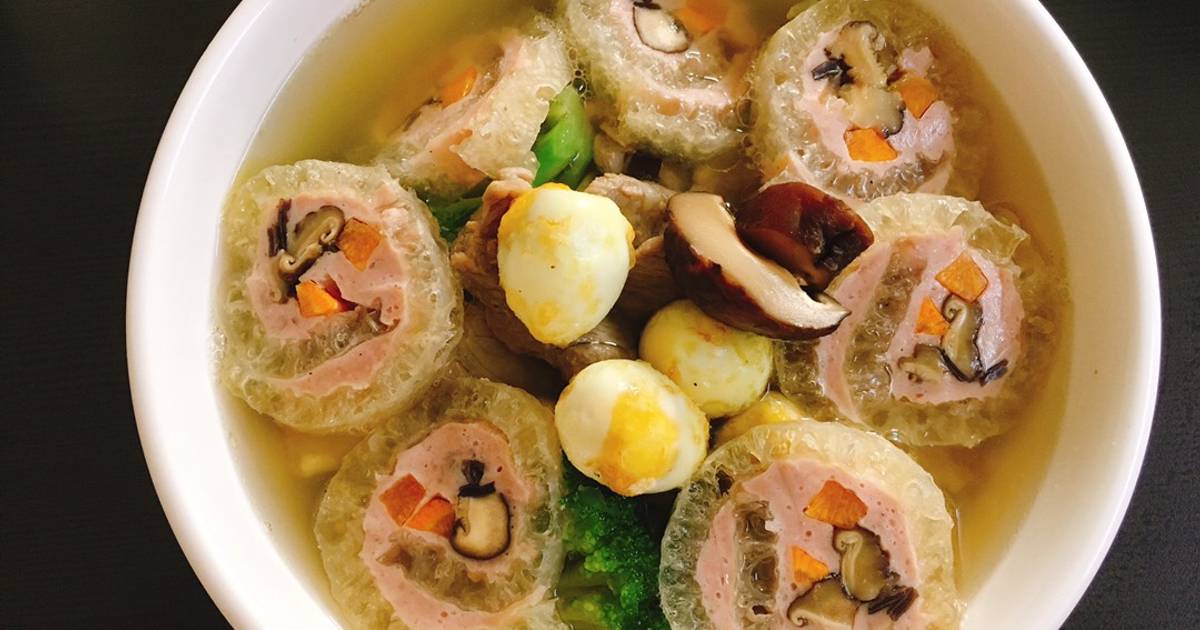
Gà luộc (boiled chicken) is a staple of Tet feasts, symbolizing prosperity and good fortune. With its vibrant golden hue, firm skin, and tender meat, this dish is both a visual and culinary delight.
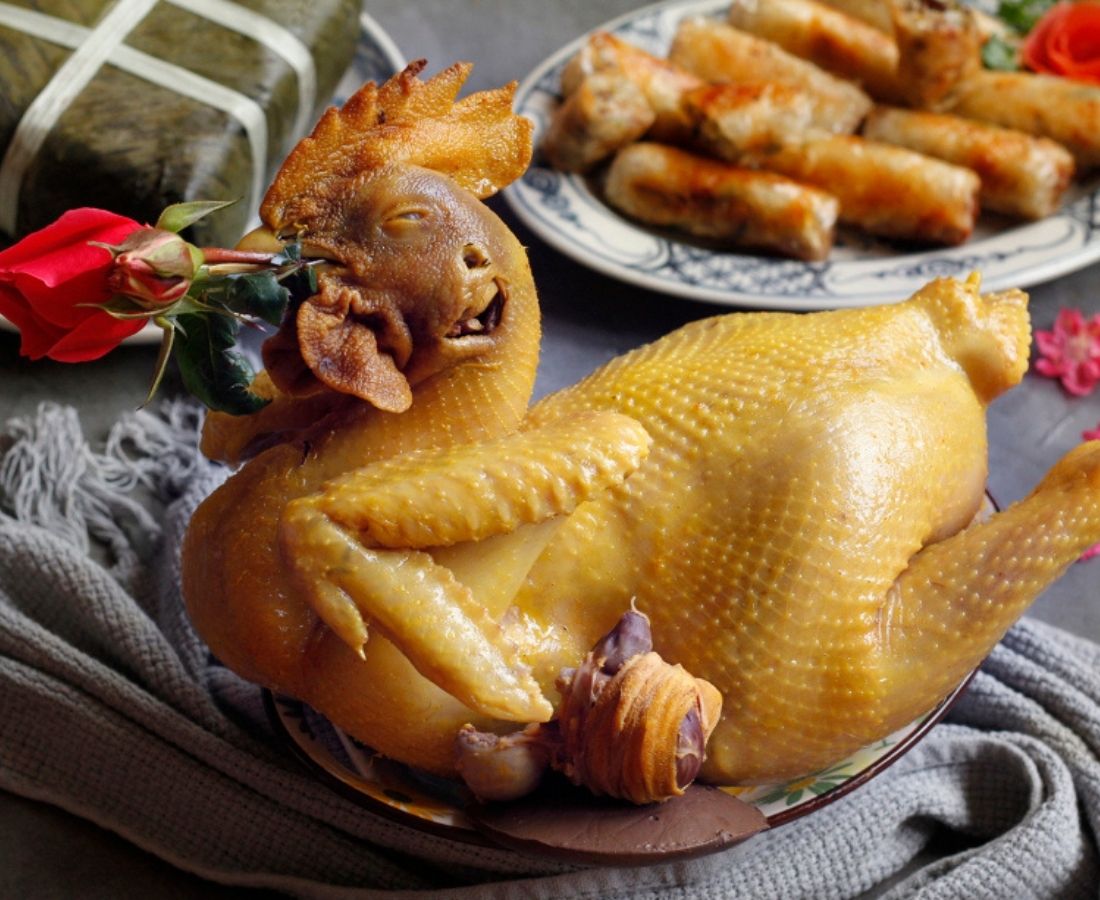
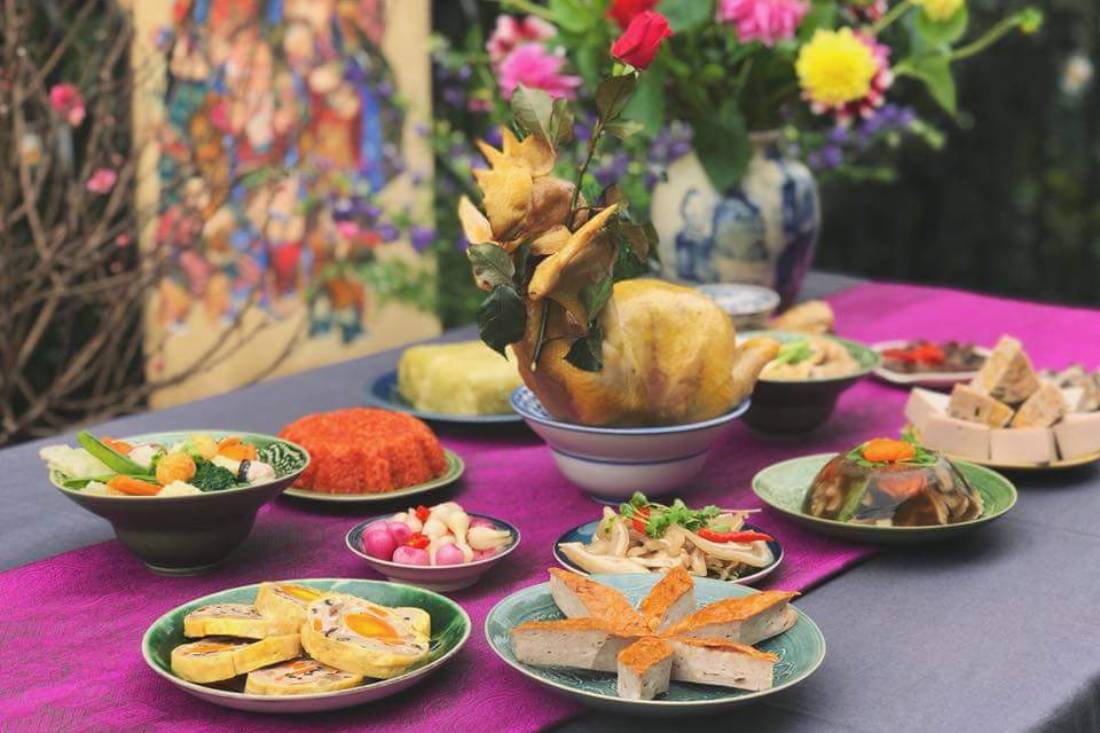
Thịt đông (jelly pork) is a quintessential winter dish, cherished for its soft, translucent texture. It naturally solidifies due to the gelatin in the pork skin and knuckle, resulting in a dish with a balanced, delicate flavor.
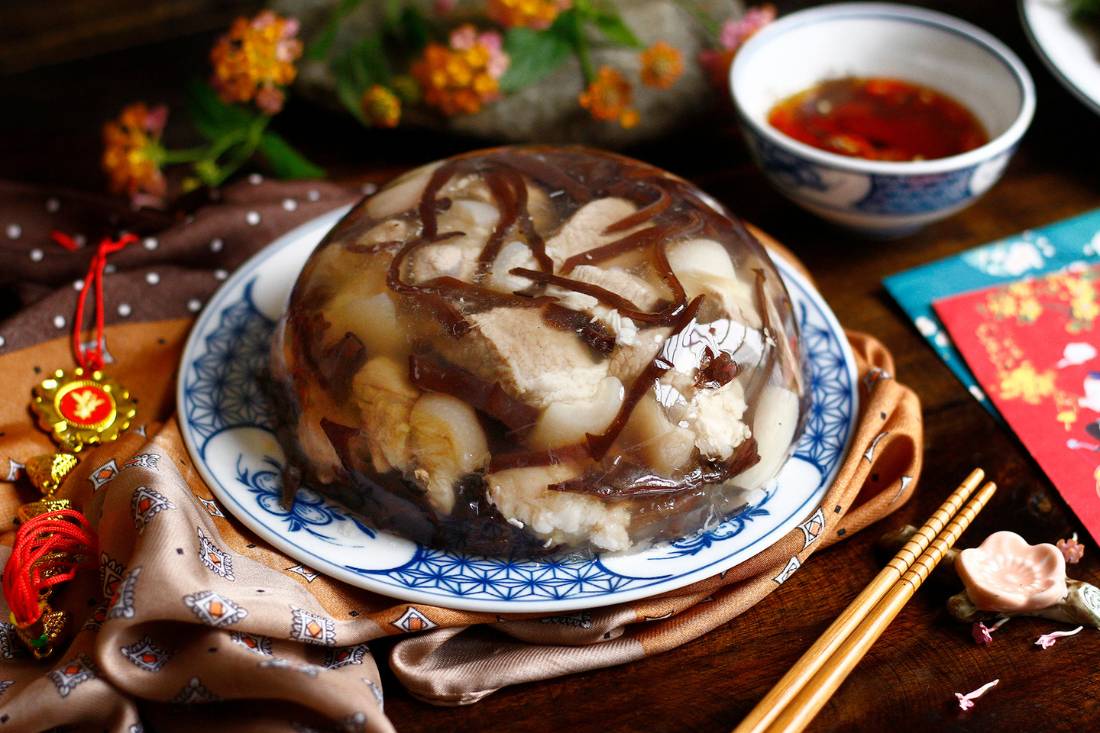
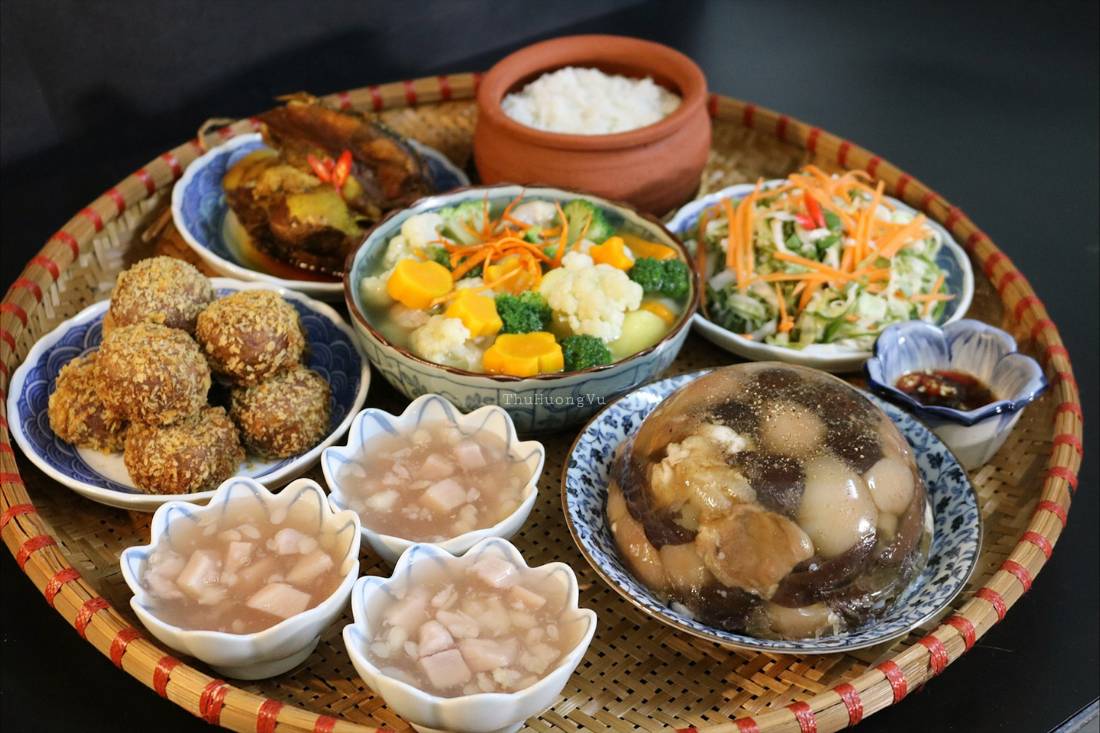
Nem rán (fried spring rolls) are crispy rolls filled with a flavorful blend of ground pork, black mushrooms, shiitake, and assorted vegetables. The well-seasoned filling strikes a perfect balance of acidity, spice, and sweetness. These spring rolls are typically served with a dipping sauce made from fish sauce, sugar, garlic, chili, and lemon, elevating their delicious flavor.

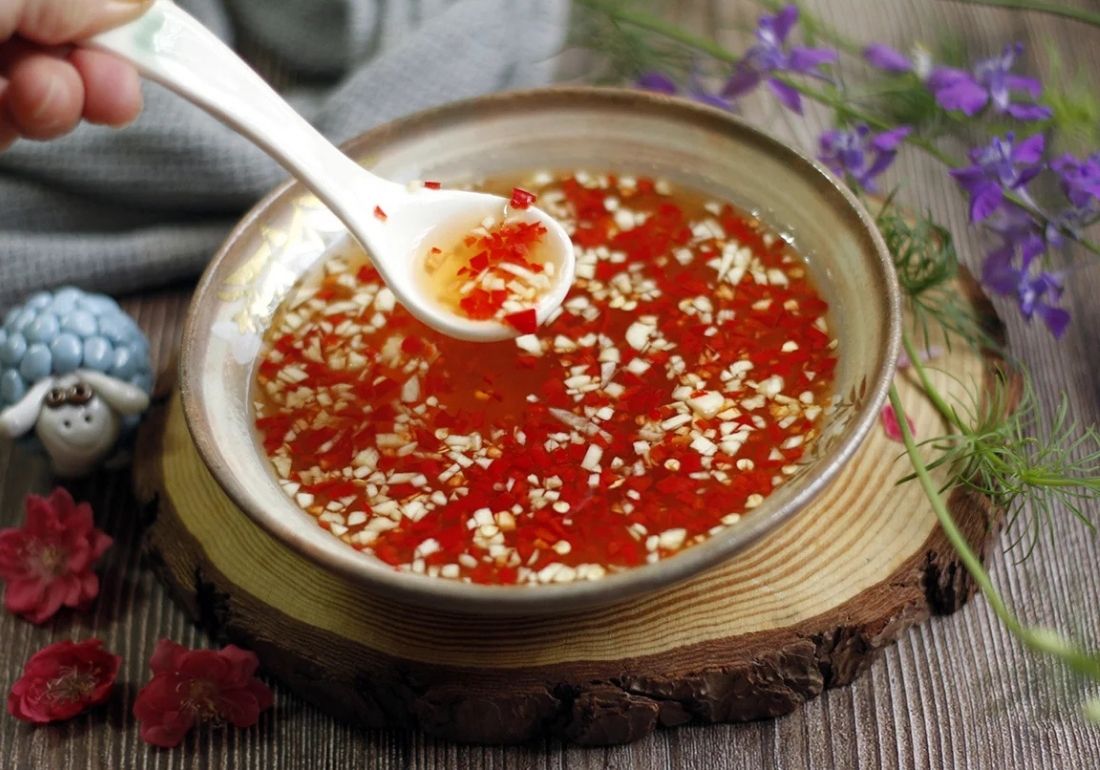
Lạp xưởng (Vietnamese sausages) are crafted from finely chopped lean pork and pork fat, mixed with alcohol and sugar, then stuffed into dried pork casings. They undergo natural fermentation to develop their distinct flavor. In the Northwest region, these sausages are traditionally hung over the fireplace and smoked slowly, infusing them with a unique, woody aroma.
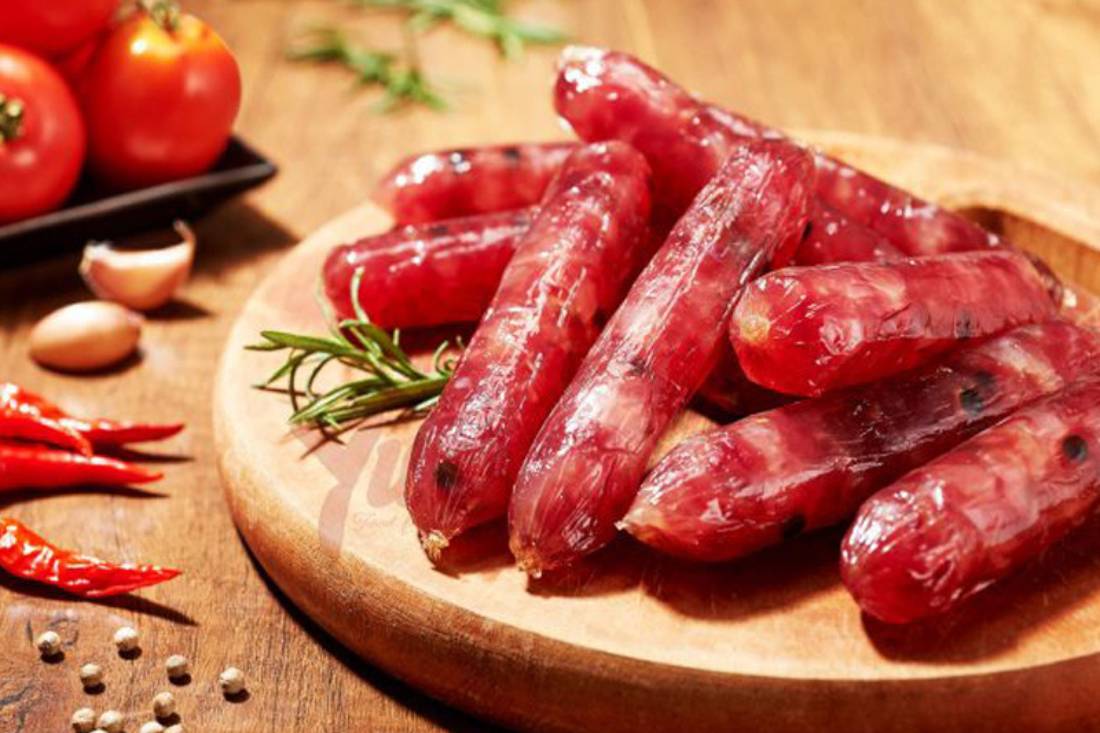
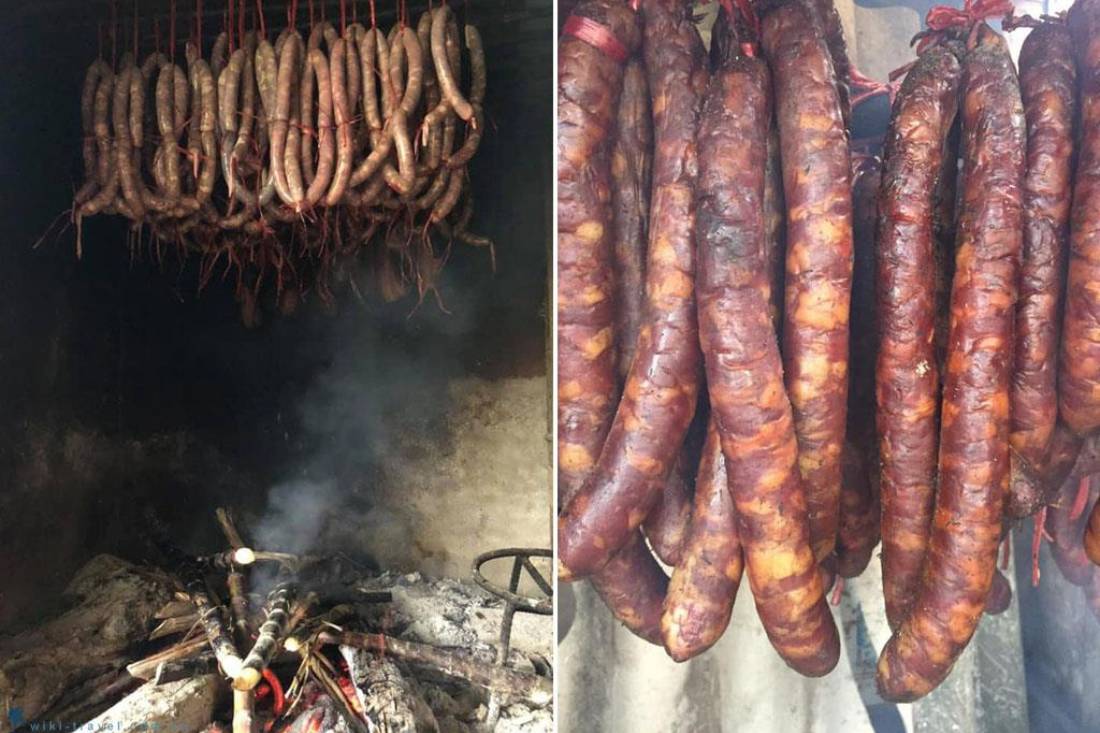
Giò thủ (pig's head pâté) is made from pig's head meat, black mushrooms, shiitake, and spices. The ingredients are sautéed, seasoned, and then tightly pressed into banana leaves to cool and set naturally. Known for its crunchy texture and rustic flavor, giò thủ embodies the authentic charm of Vietnamese cuisine.
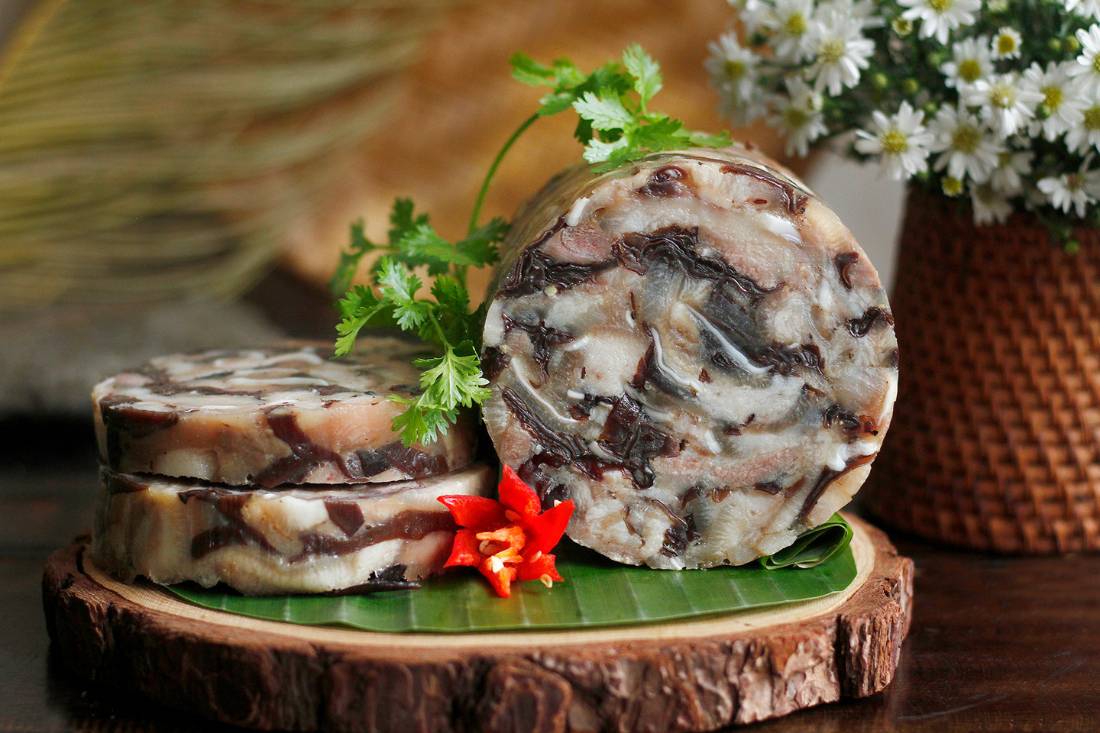
Giò lụa (pounded and boiled pork pâté) is a quintessential dish in Tet celebrations. Made from finely pounded pork mixed with spices, it is wrapped in banana leaves and boiled to perfection. Known for its tender, smooth texture and delicate flavor, giò lụa is often served in thin slices, complementing other festive dishes.
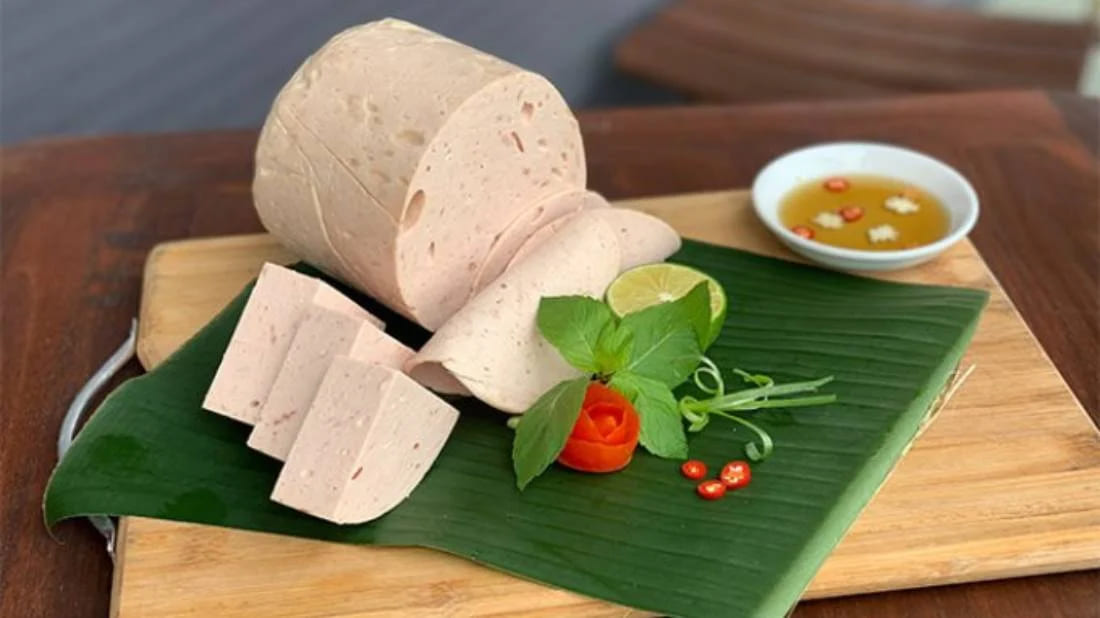

Traditional Tet meal trays are meticulously prepared with care and abundance, symbolizing the wish for a prosperous and joyful family life.

Vietnam in July: What to Expect & Where to Go

Vietnam or Cambodia: Essential Advice to Help You Choose














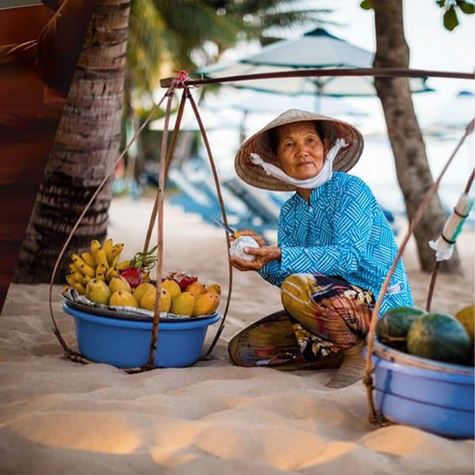
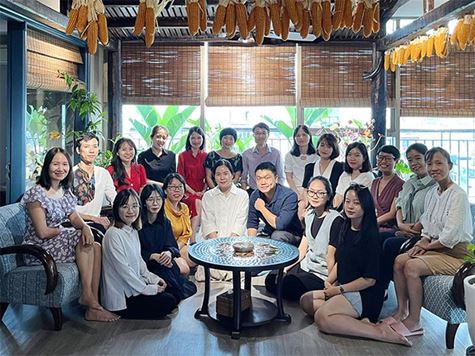

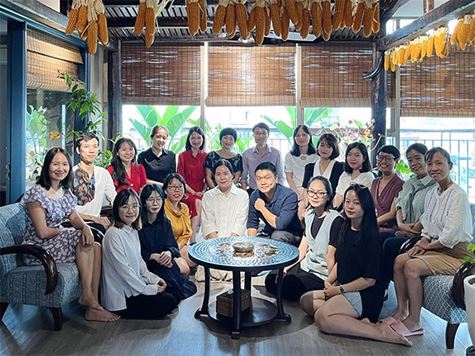

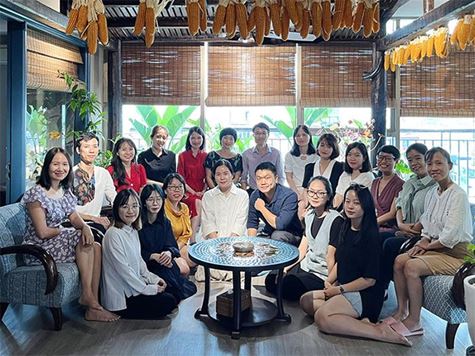

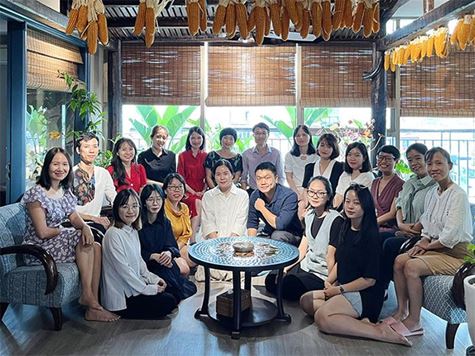

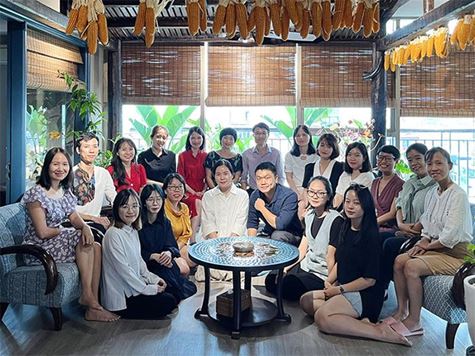

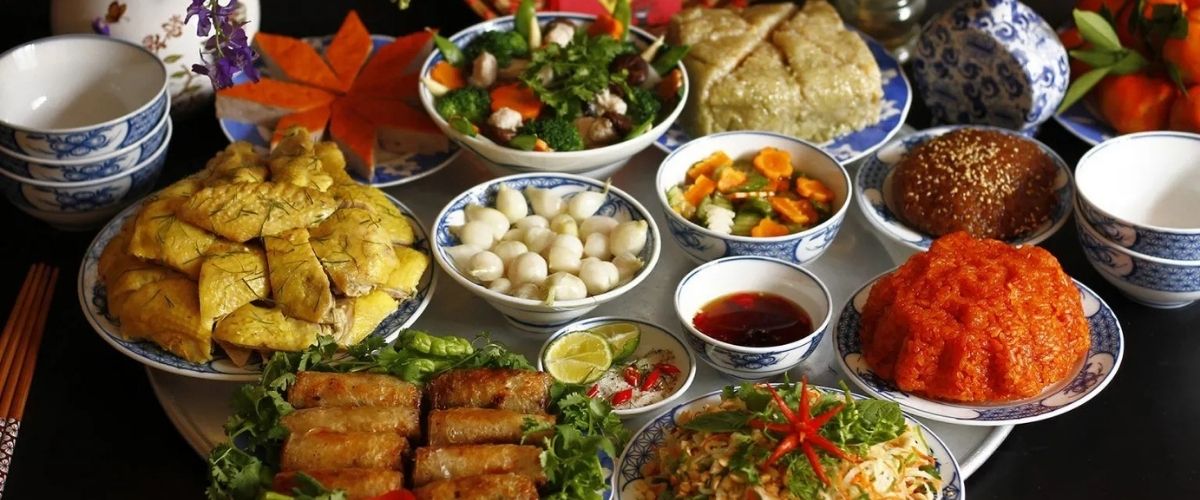
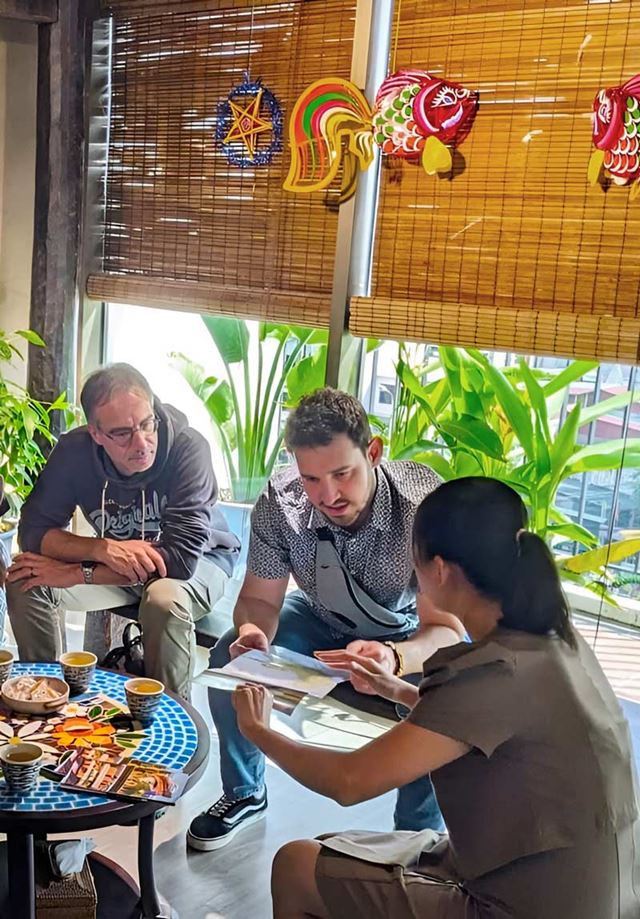

Comments